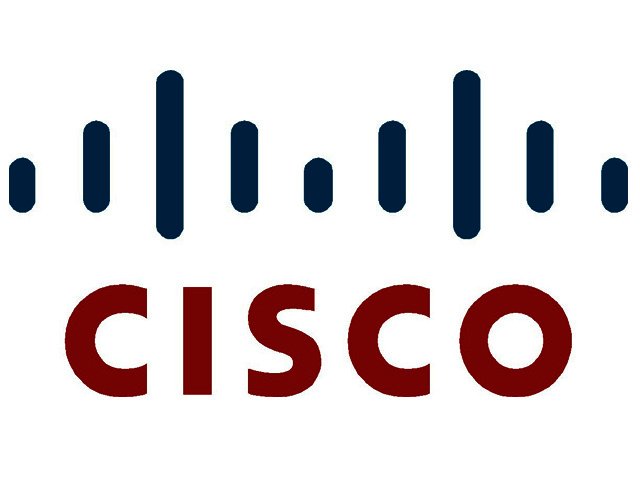Cisco presents VNI forecast for global devices and connections
By Hanleigh Daniels 31 May 2012 | Categories: news
After focusing on global mobile data traffic earlier this year, Cisco reveals the results of its annual visual networking index (VNI) forecast (2011-2016), looking at internet protocol (IP) as well as networking growth and trends around the globe.
This VNI forecast update covers 2011-2016, and quantitatively projects the amount of IP traffic which is expected to travel through public and private networks, including internet, managed IP, and mobile data traffic generated by consumers and business users.
By 2016, the company expects the annual global IP traffic to be 1.3 zettabytes, with a zettabyte being equal to a trillion GB. The projected increase of global IP traffic between 2015 and 2016 alone is over 330 exabytes, which is nearly equal to the total amount of global IP traffic generated during 2011 (369 exabytes). An exabyte is a unit of information or computer storage equal to one quintillion (one billion billion) bytes.
According to Cisco, this significant level of traffic growth and service penetration is driven by a number of factors that includes:
- An increasing number of devices due to the proliferation of tablets, smartphones, as well as other smart, web-connected devices and machine-to-machine (M2M) connections. By 2016, the forecast projects there will be nearly 18.9 billion network connections, almost 2.5 connections for each person on earth compared with 10.3 billion in 2011.
- More internet users: By 2016, Cisco expects the number of internet users to number around 3.4 billion, about 45% of the world’s projected population according to United Nations estimates.
- Faster broadband speeds: The company stated that the average fixed broadband speed is expected to increase nearly fourfold, from 9 Mbps in 2011 to a whopping 34 Mbps by 2016.
- More video: By 2016, 1.2 million video minutes, which is the equivalent of 833 days (or over two years) will be travelling the internet every second according to Cisco.
- Wi-Fi growth: More than half of the world’s web traffic is expected to emanate from Wi-Fi connections by the year 2016.
Cisco asserted that the total global IP traffic in bytes is expected to reach 1.3 zettabytes per year or 110 exabytes per month by 2016. This is nearly a fourfold increase from around 31 exabytes per month last year.
Average global IP traffic during 2016 is expected to amount to 150 petabytes per hour, which is the equivalent of 278 million people streaming an HD movie (at an average streaming speed of 1.2 Mbps) simultaneously.
The fastest-growing IP-traffic regions for the forecast period (2011–2016) are the Middle East and Africa (58% compound annual growth rate, for tenfold growth), and Latin America (49% CAGR, sevenfold growth).
Fastest growing IP traffic at the country level is for India, with the subcontinent expected to have the highest IP traffic growth rate with a 62% CAGR from 2011 to 2016. Tying for second place is South Africa and Brazil, with both having 53% CAGRs over the forecast period.
When it comes to the highest traffic generating countries by 2016, the US (22 exabytes per month) and China (12 exabytes per month) tops the list.
Global device growth & consumer video as prolific traffic generator
Last year PCs accounted for the clear majority (94%) of consumer internet traffic. This contribution is expected to decrease to 81% by 2016, as mobile devices such as tablets, media players and mobile phones provide more users to the internet.
By 2016, Cisco expects smart, web-connected TVs to account for more than 6% of global consumer internet traffic (up from 4% in 2011), and 18% of internet video traffic (up from 7% in 2011). The company stated that it expected there to be 1.5 billion internet video users by 2016, up from 792 million in 2011.
Mobile broadband and consumer mobile
According to Cisco, global mobile internet data traffic is forecast to increase 18 times from 2011 to 2016, to 10.8 exabytes per month (or 130 exabytes annually). Mobile consumers from around the world are forecast to grow from 3.7 billion last year to 4.5 billion by 2016, whilst mobile video is projected to be the fastest growing consumer mobile service, going from 271 million users in 2011 to 1.6 billion users in 2016.
Globally, this index also suggests that consumer SMS will be the most highly penetrated consumer mobile service. During 2011 there were 2.8 billion users (74% of consumer mobile users) that employed the SMS service and this expected to rise to 4.1 billion users (90% of consumer mobile users) by 2016.
And what of the corporate sector?
Cisco’s latest VNI forecast said that business internet users are projected to grow from 1.6 billion in 2011 to 2.3 billion by 2016. Desktop video-conferencing is projected to be the fastest-growing service, with 36.4 million users in 2011 increasing to 218.9 million users in 2016.
In terms of corporate and enterprise mobile services, business mobile location-based services (LBS) are forecasted to be the fastest growing business mobile service, with 27 million users in 2011 growing to 158 million users by 2016.
In related news, Cisco South Africa (SA) also announced earlier this year that Alpheus Mangale will be assuming the role of managing director for Cisco SA. Mangale will be in charge of driving the next phase of the company’s growth strategy within this region.
Most Read Articles

Have Your Say
What new tech or developments are you most anticipating this year?



